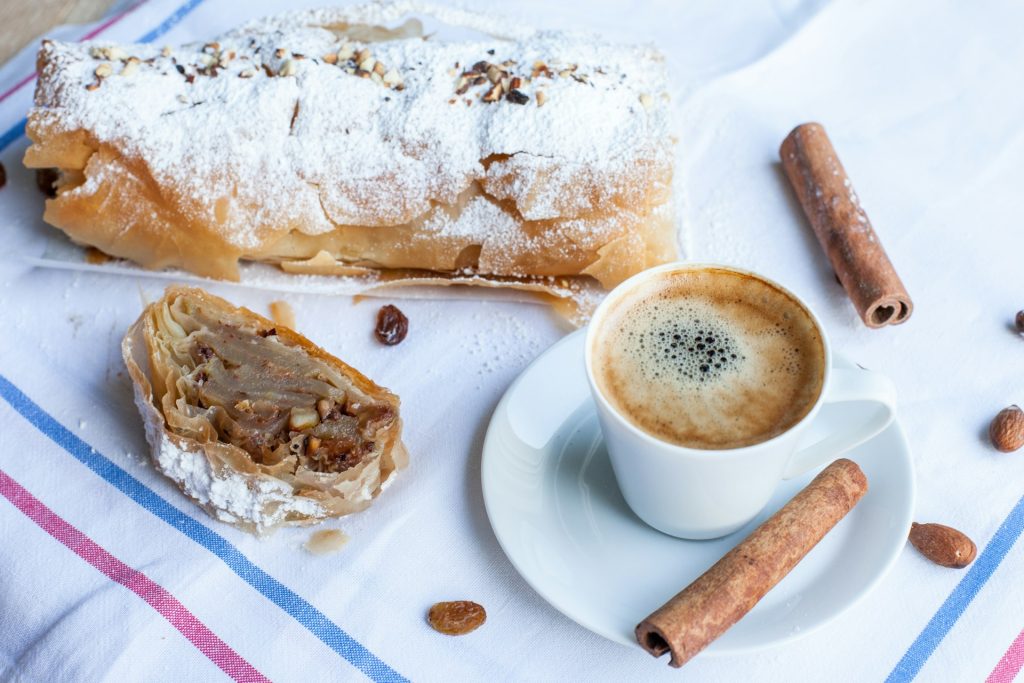Table of Contents
Ever had a coffee so strong and velvety it made you pause after the first sip? Greek coffee is exactly that—a bold, creamy drink treasured for its flavor and tradition. And the best part? You don’t need a plane ticket to Athens to experience it. With a few simple tools and tips, you can make authentic Greek coffee right in your own kitchen.
Why Greek Coffee Deserves Your Attention
Greek coffee isn’t just another way to get your caffeine fix. It’s a cornerstone of Greek culture, served in tiny cups alongside lively conversation and maybe a sweet pastry or two. Unlike standard drip coffee or espresso, Greek coffee is boiled (never filtered) in a small pot called a briki, which helps create a thick, frothy layer known as kaimaki. That froth is a big deal: a smooth layer of kaimaki signals a properly made cup.
This style of coffee has a long history, with families passing down their favorite methods and recipes. Some fans love it for the intense flavor that lingers on the palate, while others enjoy the sense of nostalgia and community it evokes. Whatever draws you in, it’s worth learning how to prepare it at home. The process might look intimidating at first, but once you get the hang of it, you’ll find it as comforting as a warm conversation with an old friend.
Gathering Your Ingredients and Tools

Before you do anything else, you’ll need a few specific items:
- A briki (or small pot): This is key. Greek coffee is traditionally made in a narrow, tall metal pot with a spout. If you don’t have a briki, a small saucepan could work, but you might not get the same creaminess.
- Finely ground coffee: Greek coffee is ground to a powdery consistency, much finer than espresso. You’ll often find labeled “Greek coffee” blends at Mediterranean grocery stores or online.
- Cold water: The ratio typically goes about one demitasse cup of water per serving. Using cold water gives the coffee more time to develop flavor as it warms slowly.
- Sugar (optional): Greek coffee can be served sweet or unsweetened. If you want it sweet, add sugar directly to the briki before brewing so it dissolves evenly.
Having the right ingredients sets the stage, but it’s how you use them that really matters. The magic lies in the gentle heating process, which allows the coffee to foam up gradually. That foam is your best friend—protect it, because it’s the heart of a proper Greek brew.
The Simple Step-by-Step Method
- Measure and Mix
Start by adding cold water to your briki. One demitasse cup of water per serving is typical. If you prefer your coffee sweet, now’s the time to add sugar—commonly one to two teaspoons for moderate sweetness. Next, add about one heaping teaspoon of finely ground coffee per serving. Don’t stir just yet. - Stir and Heat Gently
Place the briki on your stove at low to medium heat. Give the coffee, sugar, and water a gentle stir to combine. Resist any urge to stir again. From now on, you want the mixture to heat slowly and form a foam layer at the top. - Watch for the Foam
As the coffee heats, keep an eye on it. You’ll see tiny bubbles forming around the edges, and eventually, a frothy foam (kaimaki) will rise. Just before it boils over, remove the briki from the heat to prevent overflowing. If you lose that foam to a boil-over, you miss out on a crucial part of the Greek coffee experience. - Pour and Serve
Carefully pour the coffee into small demitasse cups, dividing the foam as evenly as you can. You want each cup to get a bit of that precious kaimaki. Let the cups sit for a minute or so, allowing the coffee grounds to settle. Then sip slowly, reveling in the richness of your homemade Greek coffee.
It might take a few tries to get it exactly how you like it, whether that’s adjusting sugar levels or perfecting the foam. Once you find your sweet spot, there’s no turning back. You’ll understand why so many people in Greece start and end their day with this simple ritual.
Sugar Levels: From “Sketos” to “Glykos”
In Greece, you can order your coffee in various sweetness levels, and it’s good to know the lingo:
- Sketos (unsweetened): No sugar at all. This is the pure, unadulterated version that some coffee purists swear by.
- Metrio (medium sweet): Usually about one teaspoon of sugar per cup. It maintains the coffee’s strong flavor but softens the bitterness just a touch.
- Glykos (sweet): Two or more teaspoons of sugar. If you prefer a sugary, dessert-like taste, this is the one for you.
Choosing your sugar level is part of what makes Greek coffee personal. It’s a bit like customizing your latte or cappuccino, except the changes are subtle yet impactful. If you’re new to Greek coffee, metrio can be a great place to start—just enough sweetness to ease you into the robust flavor.
Serving It Right: Tiny Cups and Good Conversation

Greek coffee is traditionally served in small cups, often accompanied by a glass of water. The idea is that it’s meant to be sipped slowly, offering a chance to chat and unwind. Think of it as a social pause rather than a mere caffeine break. If you want to replicate this at home, gather friends or family around, bring out your best small cups, and take a few minutes to appreciate each other’s company.
In many Greek households, it’s common to serve a sweet treat alongside coffee—maybe some loukoumades (Greek doughnuts) or a simple piece of baklava. While not mandatory, adding a bite of sweetness can balance the intensity of the drink, especially if you’re serving sketos. Plus, who doesn’t love a little dessert with their coffee?
Common Pitfalls and How to Avoid Them
- Boiling Over: The biggest mistake is letting the coffee boil over, which destroys the foam. Keep the heat moderate and remove the briki the instant you see the foam rising.
- Over-Stirring: You only stir at the beginning. After that, let the coffee develop on its own. Too much stirring breaks up the foam.
- Using the Wrong Grind: If the coffee isn’t ground finely enough, you won’t achieve the correct texture or flavor. Check the label or ask your local coffee shop for a Greek or Turkish-style grind.
If you do slip up, don’t worry. The best lessons come from trial and error. Even if your first attempt doesn’t look perfect, it’ll still taste pretty good. Over time, you’ll get a feel for the right heat level and the exact moment to remove the briki. That’s when you know you’re getting the hang of it.
Taste That Greek Tradition

Authentic Greek coffee is more than a drink; it’s a warm invitation to experience community, comfort, and a taste of old-world tradition. Its thick texture, frothy top, and slow, mindful process make it a standout in any coffee lover’s repertoire. So why not give it a try? You might discover that in taking the time to brew Greek coffee at home, you’re not just learning a recipe—you’re embracing a way of life that celebrates simple pleasures and real connections.

I’m Audrey, a dedicated mother of teenagers with an insatiable love for coffee. On BeanBrewLove.com, I intertwine my need for caffeine with reflections on life. Whether expressing a nostalgic sentiment or injecting a hint of sarcasm, my blog is a reservoir of coffee culture, brewing techniques, and global coffee reviews.




